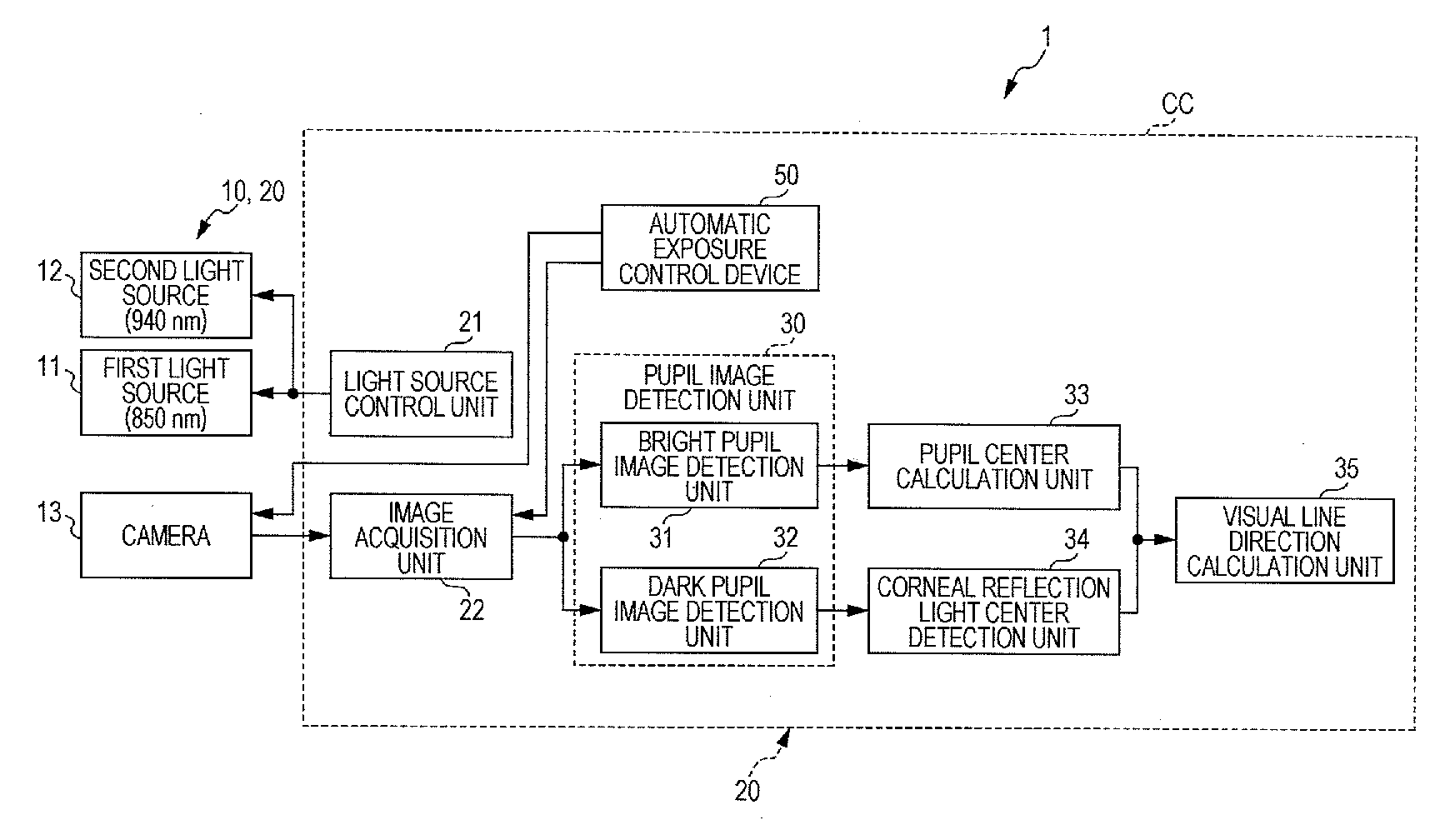In-vehicle imaging device
a technology for imaging devices and vehicles, applied in the field of vehicles, can solve problems such as difficult to accurately detect corneal reflection, image sensors, and difficult to accurately acquire face images
- Summary
- Abstract
- Description
- Claims
- Application Information
AI Technical Summary
Benefits of technology
Problems solved by technology
Method used
Image
Examples
Embodiment Construction
[0020](Configuration of In-Vehicle Imaging Device)
[0021]As illustrated in FIG. 2, an in-vehicle imaging device 1 of an embodiment of the present invention includes a pair of illuminating and image-capturing units 10 and 20 and a calculation control unit CC. As illustrated in FIG. 1 and FIGS. 6A and 6B, the illuminating and image-capturing unit 10 and the illuminating and image-capturing unit 20 are arranged a distance L1 away from each other. The distance L1 is set so as to be roughly equal to, for example, a distance between both eyes of a person.
[0022]The two illuminating and image-capturing units 10 and 20 each include a camera 13 and a plurality of first light sources 11 and a plurality of second light sources 12. The optical axis (the optical axis of the corresponding camera 13) of the illuminating and image-capturing unit 10 is O1, and the optical axis (the optical axis of the corresponding camera 13) of the illuminating and image-capturing unit 20 is O2. The light emission op...
PUM
 Login to View More
Login to View More Abstract
Description
Claims
Application Information
 Login to View More
Login to View More - R&D
- Intellectual Property
- Life Sciences
- Materials
- Tech Scout
- Unparalleled Data Quality
- Higher Quality Content
- 60% Fewer Hallucinations
Browse by: Latest US Patents, China's latest patents, Technical Efficacy Thesaurus, Application Domain, Technology Topic, Popular Technical Reports.
© 2025 PatSnap. All rights reserved.Legal|Privacy policy|Modern Slavery Act Transparency Statement|Sitemap|About US| Contact US: help@patsnap.com



